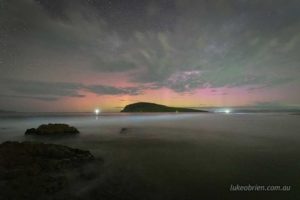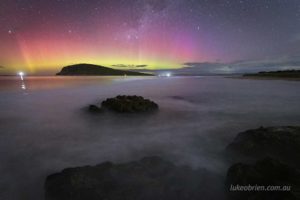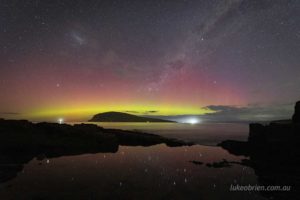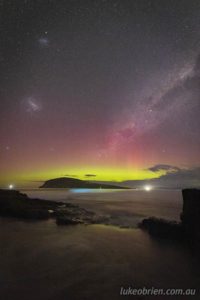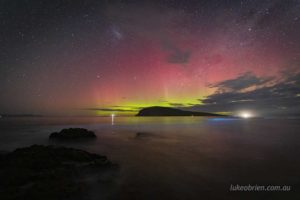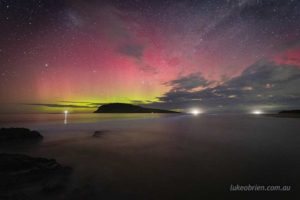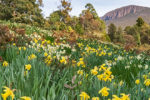Aurora and bioluminescence
I have been keen to photograph an aurora and bioluminescence in the same shot for quite a while now and a couple of nights ago I finally landed it!
The day was basically completely cloudy and there wasn’t even a great deal of expectation of an aurora but late in the afternoon I noticed the aurora numbers were looking very good, and on top of that the cloud was rapidly clearing. I often zip down to South Arm as it is definitely a spot where you can not only get nice views of the aurora but the bioluminescence is often seen there too. So just after dark, I headed out to try my luck.
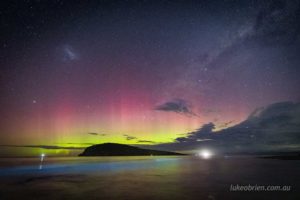
One of my favourite shots of the night – really nice combination of auroral activity, bioluminescence and the Milky Way
Pentax astrotracer and the aurora
The last few times I’ve shot the aurora, I’ve switched the astrotracer function on my Pentax K1 on. For those who are not that familiar with Pentax and the astrotracer – which I’m guessing is probably just about everyone – it is a great feature which uses the GPS to eliminate the movement of stars (ie star trails) on long exposures. It is great for deep sky objects such as nebula or comets but used with a wide angle lens at short shutter speeds (I mostly shot at 20 seconds this evening) you get pin sharp stars which is really nice. If you shoot at more than 30 seconds the horizon and the landscape elements all start to blur as the GPS locked onto the stars means the earths rotation is captured!
I’ve added a couple of these shots to my aurora australis online gallery so make sure to take a look as you start considering Christmas presents!

